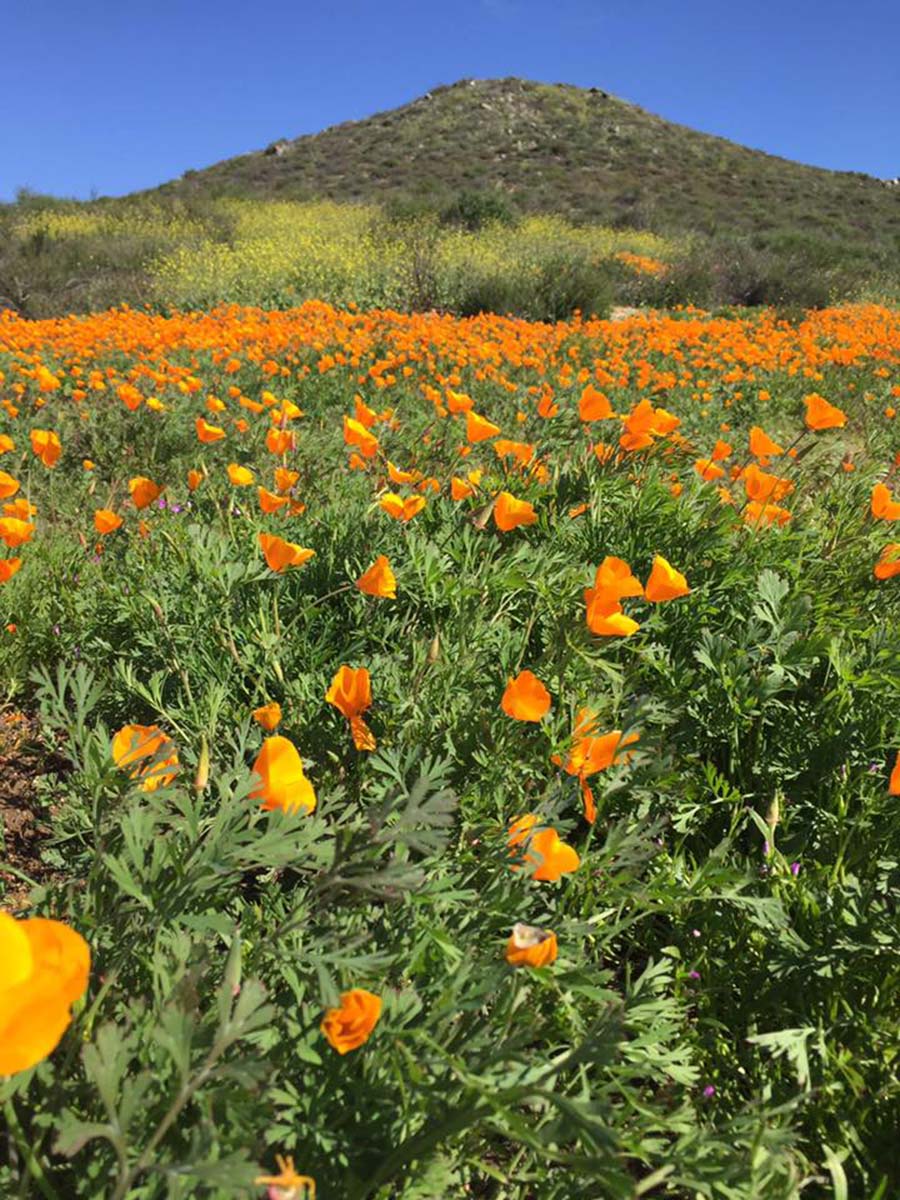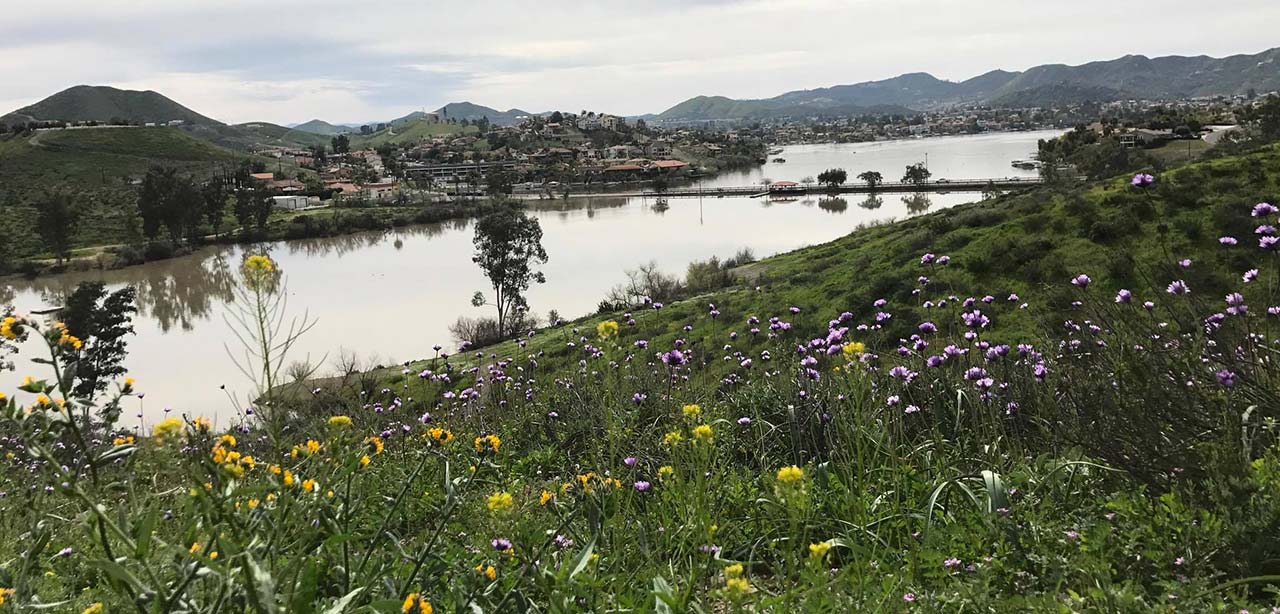The hills are alive with a carpet of wildflowers

There are an abundance of poppies in the area right now, such as these photographed by Debra Kipp while she was on a recent hike in nearby Wildomar.
“The hills are alive . . . ” with a mantle of green grass and are adorned with one of the most spectacular displays of wildflowers to be seen in this part of Riverside County in many years.
Newcomers to Canyon Lake within the last several years are probably surprised to see the wonderful array of wildflowers on display along Railroad Canyon Rd. and I-15. Brown, dry hills are the featured and typical naturescape for our normally arid region. Seasons with little rain do not trigger the spectacular presentations we now see on the slopes and in the folds of our surrounding hills. And the brightest star is the poppy.
Many years ago (25 or so) spring flowers were common in Canyon Lake. The golden-orange poppies were the featured show, with swathes of lupines mixed in among flowering sages. Much of Canyon Lake consisted of vacant lots in those days and spring flowers grew in abundance. Now, of course, there isn’t much vacant land in our community and the flowers are essentially gone. During springtime, when abundant rain falls, rare examples of the floribunda that once graced our community pop up here and there inside our gates – but not many do.
Out on the hillsides this year, however, we are being treated to displays of wildflowers almost too beautiful to describe. Poppies, lupines, yellow flowers, white flowers, blue flowers (you can easily see from my descriptions that knowing the names of these beautiful blossoms is not my strong suit).
Poppies, and all wildflowers for that matter, are a puzzle. How is it that a hillside, obviously littered with seeds, will go for years without sprouting a single flower – sometimes even after a heavy rain – then produce a floribunda show like the one we are appreciating right now?
Since we can’t talk to the seed to find out, speculation based on science and observation may produce the answer. Botanists know that several conditions must be in alignment for any seed to sprout. Domestic seeds, peas, tomatoes, onions and corn respond to human intervention and dutifully sprout almost on demand. Not so in the wild kingdom.
A perfect combination of light, heat and water is required to encourage the California poppy to put down a root and raise its head. Heat, water, soil and light in proper arrangement are not always present in our arid eco-system. When they are, the seed “knows.”
But how does the poppy seed know when to sprout? What mechanism or innate factors work to stir to life this tiny speck of nature, making it wake up and grow? Can it sense conditions? Well, clearly it can, although attributing the ability to “sense” anything to a seed implies a form of consciousness that . . . hmm, this tack is not going well. Maybe it’s just the germ of life in any seed is motivated by . . . here I go again, anthropomorphizing human attributes to a plant.
Still, poppies are moody; they demand clear skies and abundant sunlight before they will display their full beauty to the world. Poppies close their petals at night and won’t open them during dull, cloudy or overcast days. Traveling up and down Railroad Canyon Rd., it’s easy to see this trait in action. The flowers are abundant and, under full sun, they open wide; but when the skies are gloomy they remain closed and appear as orange smudges on the hillside.
Lupines, on the other hand, stand in royal purple abundance along the edges of the poppy fields and along the I-15 in arrays I haven’t seen in years. And yellow, lavender, pink, blue, orange and white flowers randomly form and flow across hillsides like oils on a painter’s palette. The sight of millions of rainbow petals riffling slightly in a gentle breeze can stop traffic.
This marvelous floral visit is all too brief, but photos by local residents have preserved these moments for us. Enjoy.
Previous Article
‘Logan’ finale scratches its way to the top rankings


 April 19, 2024
April 19, 2024